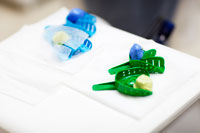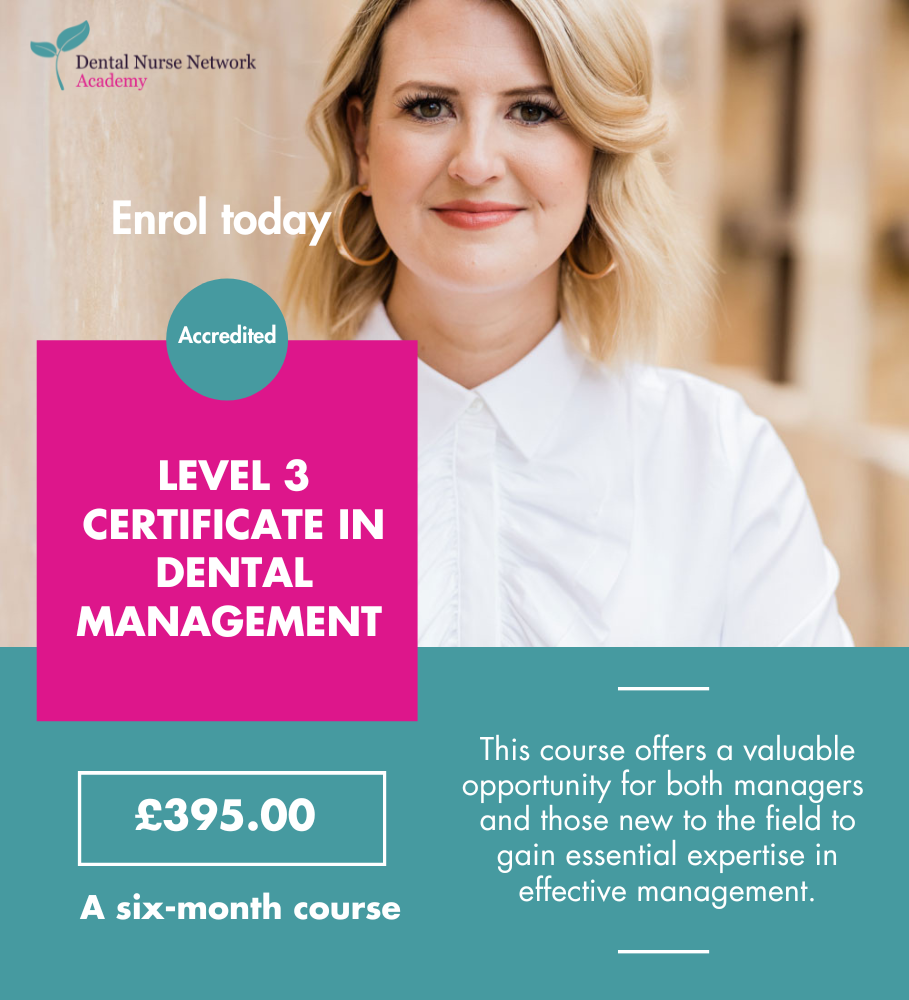 There are four main types of impression material that are routinely used in dentistry. They can be categorised into either rigid impression materials (zinc oxide eugenol and impression compound) or elastic impression materials (alginate and silicone). Each material is used for different purposes, as some laboratories require a more detailed impression than others. Impression materials are commonly classified by their elastic properties once set. Non-elastic materials are generally not used for taking impressions of crown preparations because of their inability to accurately record undercuts.
There are four main types of impression material that are routinely used in dentistry. They can be categorised into either rigid impression materials (zinc oxide eugenol and impression compound) or elastic impression materials (alginate and silicone). Each material is used for different purposes, as some laboratories require a more detailed impression than others. Impression materials are commonly classified by their elastic properties once set. Non-elastic materials are generally not used for taking impressions of crown preparations because of their inability to accurately record undercuts.
Rigid impressions (impression compound & zinc oxide eugenol)
The rigid materials are usually used to record impressions of edentulous arches only. Impression compound must be heated in a water bath and then moulded onto the impression tray. It doesn’t flow well and can't record fine detail. It is therefore used for primary impressions of edentulous arches. Impression paste is a modified form of zinc oxide eugenol. Other properties are added to make it suitable to use as an impression material. It comes in two tubes: one containing a white zinc oxide mixture and the other containing a red eugenol mixture. When using this product equal amounts of each paste should be squeezed onto a pad and mixed with a spatula. The mix should then be loaded into a special tray for secondary impressions of the edentulous arch. When the products are mixed together they will create a different colour; there should not be any red or white streaks remaining.
The advantages of impression paste include:
- An improved fit.
- Its accuracy can be improved by retaking the impression. This is done by adding fresh paste and inserting into the mouth until set.
The disadvantages of impression paste include:
- It can't reproduce undercuts, so is unsuitable for partial denture impressions.
- The material tends to stick to the lips and surrounding skin. This can be avoided with the use of petroleum jelly.
- Some patients may be sensitive to materials containing eugenol, which can cause a burning sensation.
What is the purpose of making models?
There are many reasons for taking an impression to make a model in dentistry for example;
- To study a case
- To diagnose a case
- To educate our patients about their dental needs
- To treatment plan ( especially for orthodontics )
- To construct indirect restorations including; Inlays, onlays, bridges, crowns and dentures.
Alginate
Alginate is the most widely used of all the impression materials its is a hydrocolloid material made from seaweed. A hydrocolloid material is a gelatinous substance dispersed in water. It is described as being irreversible as it cannot return to a solution once set. Alginate also contains;
- Ester salts of alginic acid ( sodium or potassium or triethanolamine alginate ) - 15%
- Calcium sulphate (reactor)- 16%
- Zinc oxide – 4%
- Potassium titanium fluoride – 3%
- Diatomaceous earth – 60%
- Sodium phosphate – 2%
- Colouring & Flavouring agent traces
When alginate is in its original state it comes in a form of powder in a variety of colours. Some alginates also have colour changing properties that help with mixing, loading and setting times. This is particularly helpful with less confident team members that take dental impressions and also nervous patient or those with gag reflexes. When alginate is mixed with water it forms a paste and then becomes a solid, elastic mass which gives us a negative reproduction. This can then be used to create a positive reproduction.
Alginate has many advantages, including:
- It’s a cheap material that serves its purpose.
- It has a limited working time based on the temperature of the water used and it is available in both standard and fast-setting varieties.
- It is easily removable.
- It is easier to use than other impression materials.
- It has a neutral taste.
- It is easy to mix.
- It is non-toxic.
- It has a good shelf life.
The disadvantages of alginate include:
- It has poor dimensional stability.
- It is messy to work with.
- Excess water gain in the alginate impression can lead to swelling.
- Excess water loss can lead to shrinkage.
- Impressions can distort easily.
- Alginate impressions must not be soaked for too long in a water-based disinfectant and should be cast up as soon as possible to avoid shrinkage leading to inaccurate dental work.
Silicone and putty wash
Silicone impression material consists of a base and catalyst in a putty consistency. Silicone impressions are classified according to their method of polymerisation on setting. They are available in a range of viscosities including light, medium, heavy and very high viscosity (or putty) material. When taking a putty impression it is usually combined with a low viscosity silicone. This is also known as the putty wash technique. Putties were developed initially to reduce the shrinkage of condensation silicones. There are three ways of recording a putty wash impression:
- One-stage impression – putty and wash are recorded simultaneously.
- Two-stage un-spaced impression – putty impression is recorded first and after it has set it is relined with a thin layer of wash material.
- Two stage spaced impression – a space is created for the wash. This space may be made by:
- Using a polythene spacer over the teeth prior to making the putty impression.
- Recording the putty impression before the tooth preparation.
- Scooping away the putty and providing escape channels for the wash.
The most effective way of recording a putty wash impression is to use the one-stage technique in a rigid metal tray.
To support my research on impression materials I asked two dentists their opinions on the different impression materials:
Silicones are the most dimensionally stable of all the materials and will keep their shape even if left for long periods. However, silicones work best in a dry environment and may not be ideal if there is a lot of saliva. Alginate is flexible and flows well. This allows the impression material to record fine surface detail. However, alginate does have poor dimensional stability and will distort if left to dry or left in water for too long. - Dr May Ali
Alginate is the cheapest and most commonly used impression material. It is versatile and useful for denture work, opposing impressions for crown and bridge work and removable orthodontic appliances. Alginate is not as accurate as silicone and is prone to distortion if not kept damp. Silicone has different grades of thickness and is often used where more accurate work is required. It is commonly used for taking impressions for crowns, bridges, short term braces and fixed retainers. The heavier silicone can be used to record the area approximately and the lighter ('runnier') silicone can then be used to record the finer detail, giving a really accurate impression. This can be done in two stages or simultaneously. - Dr Liam Alsop
The differences between impression materials, as outlined above, are the materials themselves and the purpose they are used for. Each of the materials has advantages and disadvantages, but they are each used for a different purpose and are effective and commonly used products in dentistry today.
Author: R Gibbons, RDN, PTTLS


